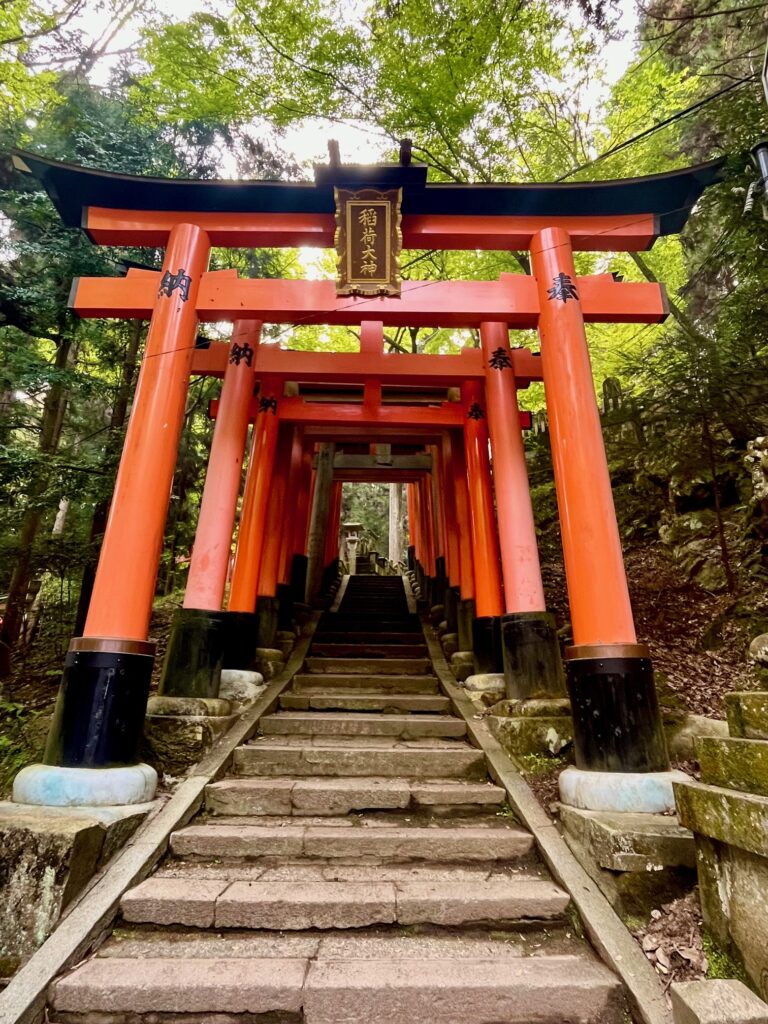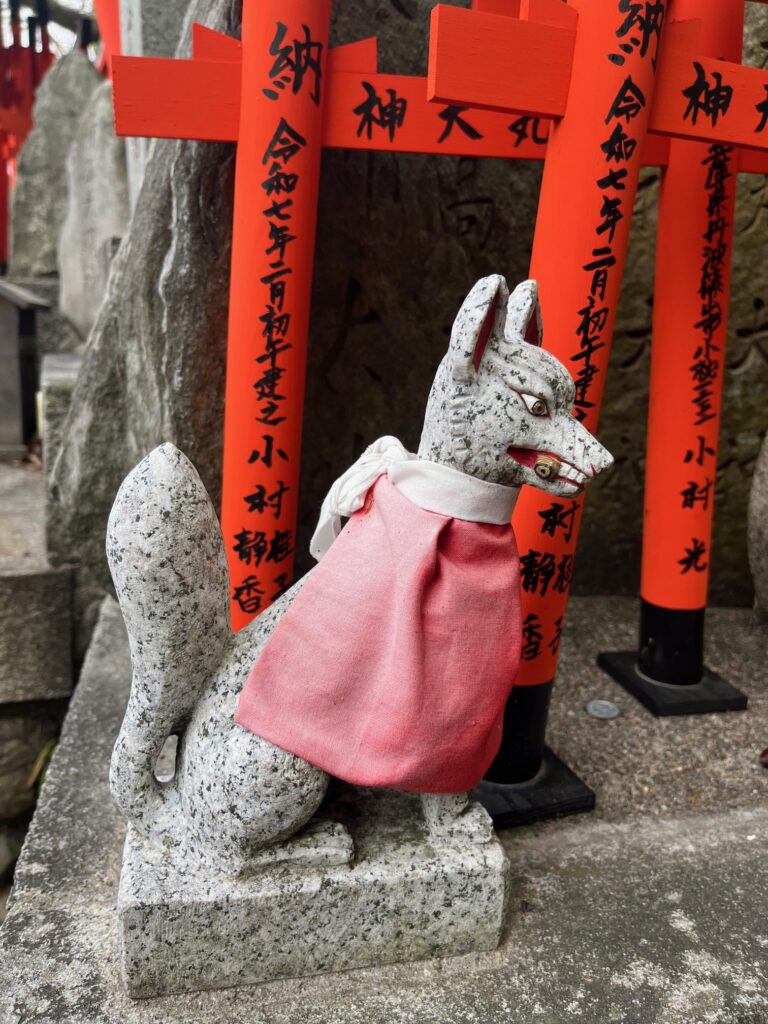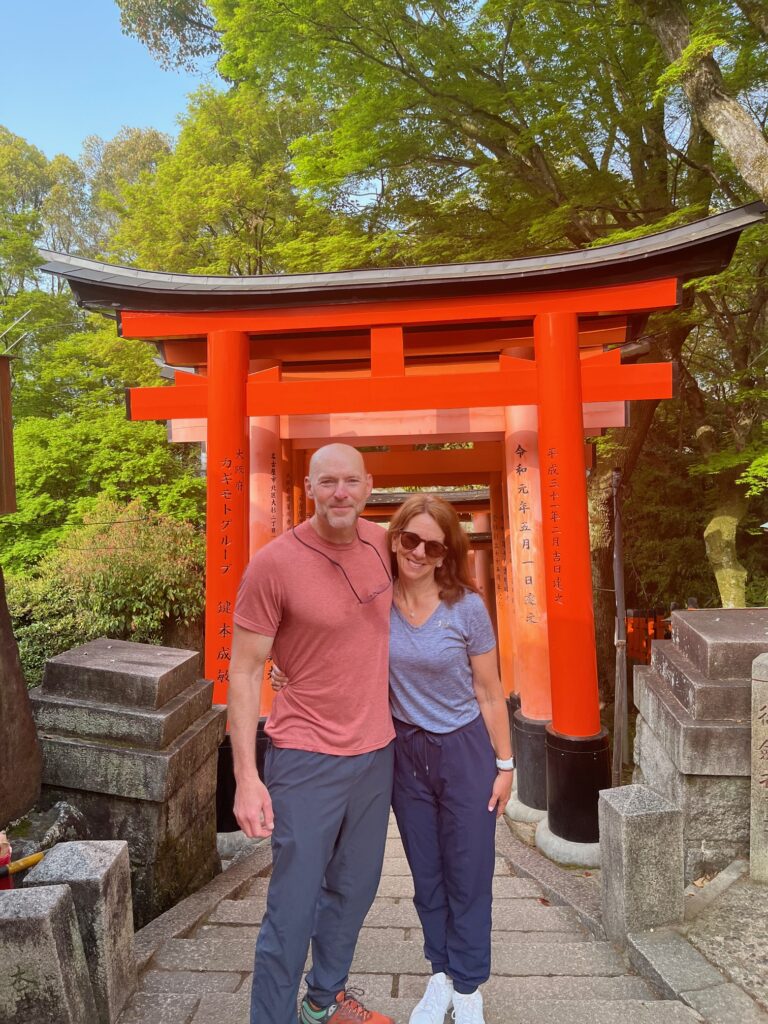
A Shrine Steeped in Centuries of Spirit
If there’s one place in Kyoto that feels straight out of a dream, it’s Fushimi Inari Taisha—home to those iconic orange torii gates that seem to go on forever. Nestled at the base of Mount Inari, this Shinto shrine is one of Japan’s most photogenic and spiritual destinations. But beyond the picture-perfect scenes, there’s fascinating history woven into every step of the journey. Fushimi Inari isn’t just any shrine—it’s the head shrine of over 30,000 Inari shrines spread across Japan. Founded in 711 AD, it’s dedicated to Inari, the Shinto deity of rice, agriculture, prosperity, and business success. One thing you’ll quickly notice: fox statues are everywhere. In Shinto belief, foxes are messengers and often depicted holding keys in their mouths.
The Magic of the Torii Gates
Once you pass through the main shrine grounds, you’ll find yourself at the start of the Senbon Torii, meaning “thousands of torii gates.” And yes—it lives up to the name. Around 10,000 torii gates line the trails that wind up Mount Inari, creating an endless corridor of fiery orange. Each gate is a donation from individuals or businesses hoping for blessings and good fortune. Look closely and you’ll see Japanese writing in black on each gate. These inscriptions include the name of the donor and the date the gate was donated. The morning we got to see a painter etching a new inscription.
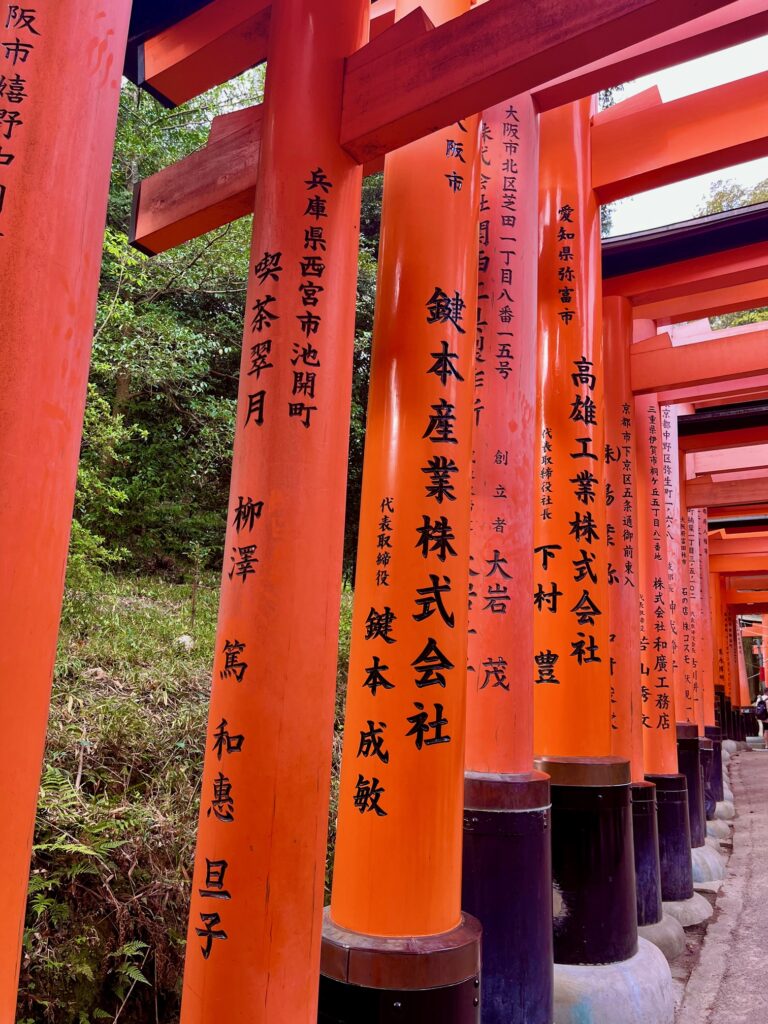
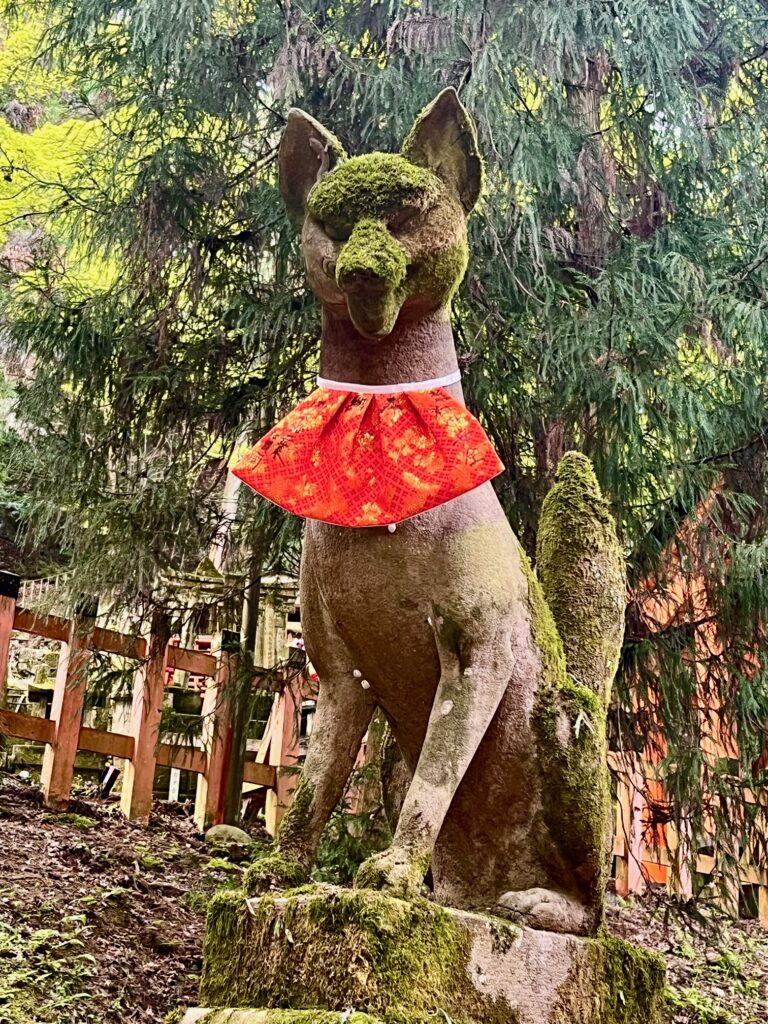
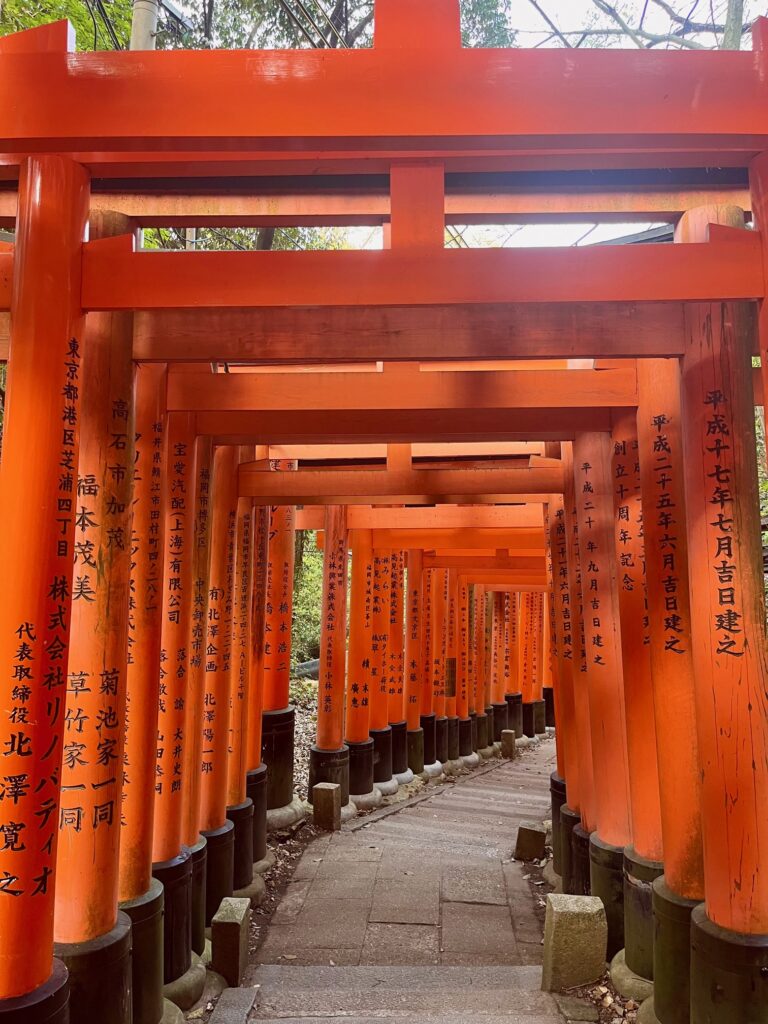
Climbing Mount Inari: Steps, Shrines, and Scenic Stops
The hike to the top of Mount Inari is about 4 kilometers (2.5 miles) round trip, and it’s no joke—especially for your calves! Expect around 12,000 steps. The trail is dotted with smaller shrines, fox statues, quiet rest spots, and even charming little tea houses.
Fushimi Inari is open 24 hours a day, which is rare and amazing. But because of that—and because it’s free to enter—it gets very popular, especially from mid-morning onward. To truly soak in the magic, we were told to arrive around sunrise. We seem to be waking up early so far on this trip, but we were on the subway by 6:00. We were able to catch the golden morning light filtering through the gates, experience the mostly quiet stillness of the mountain, and get our best photos without the crowds. By the time we were leaving, we knew we made the right choice as we saw crowds arriving. It’s a very special place as you walk through 1,000 years of spiritual history.
